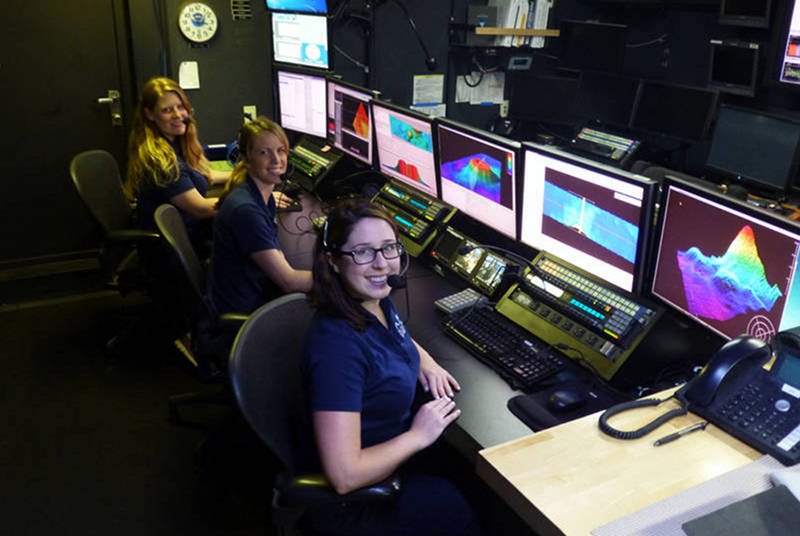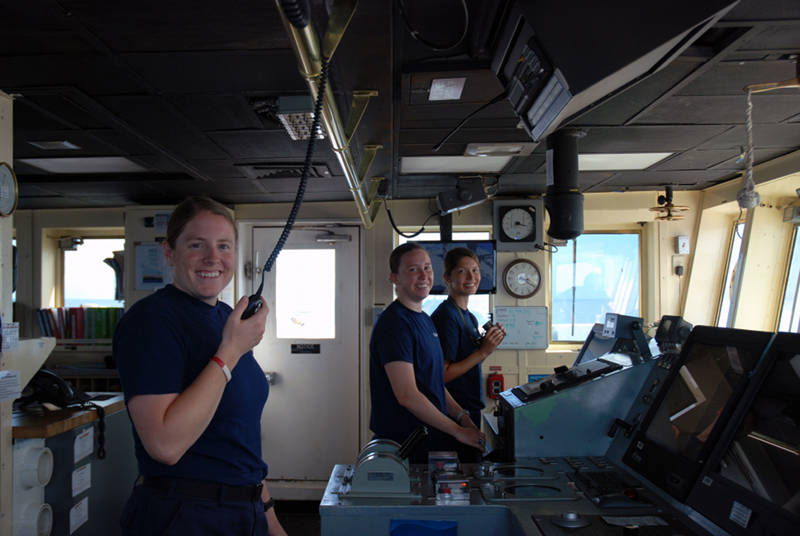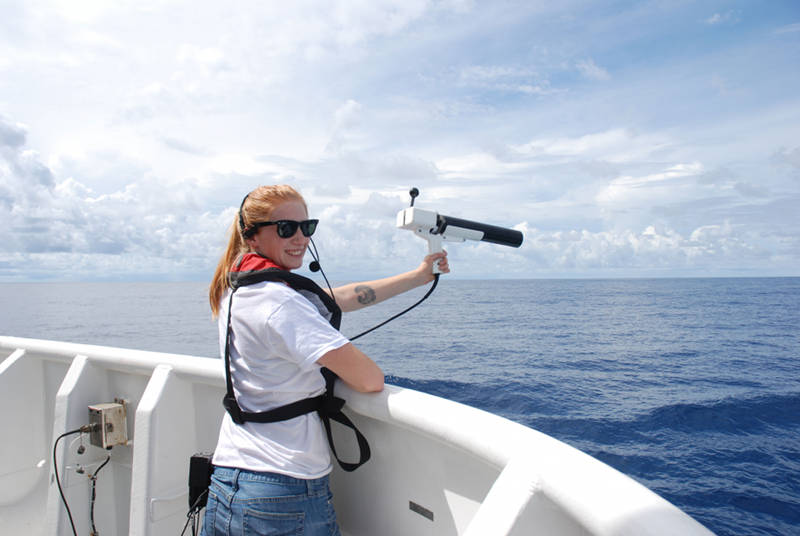
By Linsay McKenna - Office of Ocean Exploration and Research
May 20, 2015

Collecting and processing high-resolution mapping data is done from the Mission Control room. Here we monitor the sonars, clean and process files, and use specialized software to visualize seafloor features in three-dimensions. From left to right: Kasey Cantwell, Field Operations Specialist with NOAA Office of Ocean Exploration and Research; Lindsay McKenna, Expedition Coordinator with NOAA Office of Ocean Exploration and Research; and Abigail Casavant, Explorer-in-Training from the University of Rhode Island History and Underwater Archeology graduate program. Image courtesy of NOAA Office of Ocean Exploration and Research, Tropical Exploration 2015. Download larger version (jpg, 1.4 MB).

To effectively explore the oceans, we need a good crew to safely navigate and drive the ship. Here’s three of our female crew members taking control at the helm. From left to right are NOAA Corps Officer LT Emily Rose, USCG Cadet Megan Toomey, and USCG Cadet Shelia Dutt. Megan and Shelia are between the junior and senior years at the Coast Guard Academy, they joined the ship for this expedition to gain hands on experience driving a large ocean-going vessel. Image courtesy of NOAA Office of Ocean Exploration and Research, Tropical Exploration 2015. Download image (jpg, 1.1 MB).
Last night someone shared an article with me about the #girlswithtoys trending on social media, which highlights female scientists and their “toys” or tools of the trade. The article described how one woman started the trend in an attempt to show her daughter the types of work women scientists and engineers can engage in. On NOAA Ship Okeanos Explorer we have an exceptional crew of both women and men. We also have a number of exciting “toys” that help us create high-resolution maps of the seafloor and collect oceanographic data. We’re using these tools to explore the eastern Pacific Ocean where we’ve already discovered several underwater mountains, or knolls, that have never been seen before. We saw this twitter trend as a fun way to highlight some of our female scientists onboard, so here are the #girlswithtoys shots from our current cruise on Okeanos Explorer.

Kate von Krusenstiern, an Explorer-in-Training from Bellingham, Washington, casting an expendable-bathy-thermograph (XBT) off the stern of the ship to measure the temperature of the water column. We use this data along with measurements of salinity to create sound speed profiles, which are used to correct the multibeam data in real-time. Image courtesy of NOAA Office of Ocean Exploration and Research, Tropical Exploration 2015. Download larger version (jpg, 893 KB).